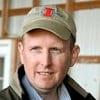Explore all the information on
Swine health
Pig diseases can be caused by bacteria, viruses, protozoa, nutritional deficiencies, poisonous substances, internal and external parasites.
Bacterial diseases include swine erysipelas, swine dysentery, infectious poly-arthritis etc. Viral and mycoplasma diseases include African swine fever, swine influenza, enzootic pneumonia of pigs, vesicular exanthema of swine, transmissible gastroenteritis etc. Helminthiasis as a health problem in pigs is mainly caused by worms like the lungworm, ascaris worm etc. Nutritional diseases include piglet anemia, parakeratosis etc. External parasitic infections include mange, lice, jiggers etc.
How to tell that a pig is in bad health:
General signs: dullness, loss of appetite, labored or rapid breathing, sudden deaths, loss of weight, low weight gain and fever usually manifested by shivering of the pig.
Signs expressed on the skin: reddening of the skin or skin discoloration, loss of hair and hardening of some parts of the skin, itching and cracking of the skin.
Other signs: lameness, cough, abnormal nasal discharges, diarrhea with a putrid smell, abnormal content and color of feces and abortions.
Respiratory diseases hurt swine operations on both the input and output side of the equation: feed costs rise as performance plummets. New research suggests that by using soybean meal, you can mitigate these challenges as a cost-effective tool for maintaining pig health and performance during outbreaks. Respiratory Diseases Present Challenges When pigs are infected with respiratory diseases such as swine respiratory disease (SRD) and porcine...
Comments : 1
Recommendations: 0
This article explores the alarming link between swine manure management practices — specifically pit/lagoon agitation and emptying — and the occurrence of Porcine Reproductive and Respiratory Syndrome (PRRS) outbreaks.
The study, conducted between July 2019 and June 2020 and collecting data from 150 affected sow farms, demonstrates a definitive temporal relationship between these practices and the probability of reporting a PRRS outbreak. Authors Carles Vilalta,...
Comments : 0
Recommendations: 0
Porcine Reproductive and Respiratory Syndrome (PRRS) is a highly challenging and complex viral disease that severely affects both the reproductive and respiratory systems of pigs. PRRS leads to significant economic losses in pig industries worldwide due to decreased productivity, increased mortality, and costly control...
Comments : 0
Recommendations: 0
Introduction: Porcine epidemic diarrhea virus (PEDV) belongs to genus alphacoronavirus. The disease, PED, which causes high mortality rates in newborn piglets, is characterized by acute vomiting and watery diarrhea. During late 2010 in China and Southeast Aisa, several PEDV strains were initially isolated. Subsequently, the disease was pandemic in several provinces neighboring Zhejiang and later in United States in 2013. It aroused our great interest to analyze the reasons...
Comments : 0
Recommendations: 0
Introduction: Porcine reproductive and respiratory syndrome virus (PRRS) can decrease growth and cause infertility and abortion in adult pigs. This study was conducted to further understand the risk associated with PRRS transmission/movement at the lairage facility. Materials and Methods: A contact model for the unloading dock was employed using a 68L plastic tub. The model dock was contaminated with a mixture of 1L of PRRS and PEDV-negative manure and...
Comments : 0
Recommendations: 0
Introduction: PRRSV outbreaks have recently been described in several boar studs in Germany, though only a few farrowing farms have observed clinical signs. In the present study, 14 farrowing farms with different vaccination schemes were included that reported severe clinical infection after insemination with PRRSV-contaminated semen. For these 14 farms, the PRRSV infection status was recorded one year after the initial outbreak, taking into account their vaccination...
Comments : 0
Recommendations: 0
Introduction: An atypical and highly pathogenic porcine reproductive and respiratory syndrome (HP-PRRS) variant has occurred in China and Southeast Asia. This disease was characterized by a high fever of above 41˚C, anorexia, red discoloration of the ears (blue ear) and high mortality in pigs of all ages. Recently, it has reported that macrolide antibiotics may have an anti-viral effect on PRRSV. We previously demonstrated that the macrolide antibiotic, tylvalosin...
Comments : 0
Recommendations: 0
Introduction: The Porcine Reproductive and Respiratory Syndrome virus (PRRSv) is a disease endemic on most porcine herds causing significant economic impact in the pig sector. Two genotypes were identified nearly simultaneously in Europe and the USA with antigenic differences that lead to two distinct genotypes: the European type (genotype 1) and the North American type (genotype 2). Materials and Methods: The PRRSv infection status has been followed...
Comments : 0
Recommendations: 0
Introduction: High mortalities are sometimes observed in pigs exposed to PRRSv, even when vaccination is administered. Vaccination protocols at only half the label dose of modified live PRRS vaccine are used infrequently in the field to reduce production costs. Half dosing PRRS vaccine may lead to more variation in the protective immune response to field virus PRRS infections when faced with highly pathogenic strains and/or early exposure compared to a full dose of modified live...
Comments : 0
Recommendations: 0
Introduction: Influenza A viruses (IAV) periodically transmit between pigs, people, and birds. If two IAV strains infect the same host, genes can reassort to generate progeny virus with potential to be more infectious or avoid immunity. Pigs pose a risk for such reassortment. Highly pathogenic avian influenza (HPAI) viruses are a global health concern due to the high human case fatality rate observed with specific H5 lineages, such as the Euro-African lineage H5N1 that...
Comments : 0
Recommendations: 0
A review by F.P. Bortolozzo, M.B. Menegat, A.P.G. Mellagi, M.L. Bernardi, and I. Wentz, published in Reproduction in Domestic Animals (Reprod. Domest. Anim. 2015, 50, Suppl. 2, 80–84), examines new strategies to improve the efficiency of artificial insemination in swine. The primary goal is to reduce the number of sperm cells required per insemination dose while maintaining high reproductive performance, a key factor in optimizing the use of high-genetic-merit...
Comments : 0
Recommendations: 0
Introduction: Because of presumed side effects, Dutch farmers are often unwilling to vaccinate sows in first month and in the last weeks of gestation. In 2015 a new PRRS vaccine for sows is introduced for the Dutch market (ReproCyc® PRRS EU, Boehringer Ingelheim), which is recommended to use in 3 to 4 mass vaccinations of the sows per year. This is an evaluation of adverse reactions after mass vaccination of sows with ReproCyc PRRS EU under field...
Comments : 0
Recommendations: 0


Fermentation products of Cordyceps militaris enhance performance and modulate immune response of weaned piglets
Suggested link
Introduction: A 3000 sow SPF GGP farm was infected by PRRS virus in August 2014 with severe clinical signs. The eradication process has started in 3 months. Materials and Methods: The eradication has been done by herd closure on the sow farm and partial depopulation on the rearing farm. Strong internal biosecurity measures were introduced on the farm. The farm started 3-week batch system to help clear the virus from the farrowing rooms and to make AIAO in the...
Comments : 0
Recommendations: 0
1 Introduction Global consumption of pork has increased greatly, making it the second most consumed meat, representing > 34% of global meat consumption (2022 estimates) (1, 42). Studies reveal a 77% growth in pork demand from 1990 to 2022 (2) and with the growing world population and economic growth, the demand is likely to continue growing (2, 3). Consequently, global pig production has grown by about 140% from 1990 to 2021 (42). The USA, Mexico, and Canada ranking among the...
Comments : 0
Recommendations: 0
1. Introduction The swine industry is continually working to improve all aspects of pork production; the development of efficient, yet diagnostically sensitive, disease detection and surveil lance methods is a significant part of this ongoing effort. First described in 2008 for the surveillance of porcine reproductive and respiratory syndrome virus (PRRSV) and porcine circovirus type 2 (PCV2) [1,2], pen-based oral fluids are widely used because of the reduced labor and cost...
Comments : 0
Recommendations: 0
1. Introduction African swine fever (ASF) is a devastating hemorrhagic disease of domestic pigs and wild suids caused by a large double-stranded DNA virus, African swine fever virus (ASFV). ASFV is the only member of the Asfarviridae family and only members of the Suidae family are susceptible to ASFV, which has no zoonotic potential [1,2]. Virulent strains of ASFV can kill domestic pigs within about 5–14 days of infection, with a mortality rate approaching 100% [3]....
Comments : 0
Recommendations: 0
Effective sow management is a cornerstone of modern pig production, directly impacting herd productivity and overall farm profitability. Proper care and nutrition of sows not only improve reproductive performance, but also enhance piglet health and survival rates. As swine production becomes more intensive and...
Comments : 0
Recommendations: 1
1. Introduction Porcine reproductive and respiratory syndrome (PRRS), a globally significant disease of pigs, is caused by the porcine reproductive and respiratory syndrome virus (PRRSV) [1]. Infection of breeding female swine with PRRSV results in reduced animal welfare, poor reproductive performance, and significant economic loss to farmers [2]. To control PRRS, PRRSV entry into breeding herds must be prevented through the application of a comprehensive, science-based plan of...
Comments : 0
Recommendations: 0
Modern animal production, optimal health is rooted in gut integrity. The gastrointestinal tract serves not only as the center for nutrient absorption but also as a critical regulator of immune function, neuroendocrine signaling, and overall physiological balance via the gut-brain axis. Any disruption within this system can result in widespread systemic impacts, affecting performance, disease resilience, and welfare outcomes. The most advanced feeding strategies and...
Comments : 0
Recommendations: 1
1. Introduction to ASF and Current Disease Situation in Asia African swine fever virus (ASFV) genotype II, following its emergence and rapid spread in China in 2018, poses a critical threat due to its high fatality rate in infected pigs (domestic and wild). Since then, outbreaks in 19 countries within this region have been reported to the World Animal Health Information System (WAHIS) as of July 2024 (Figure 1). The social, health, and economic impacts on communities due to ASF...
Comments : 0
Recommendations: 0

.jpg&w=3840&q=75)





.jpg&w=3840&q=75)













